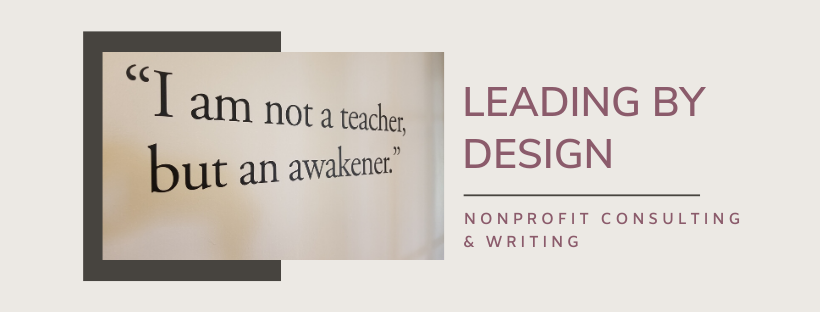LAST MONTH I PRESENTED A WORKSHOP ON NONPROFIT BOARD-STAFF RELATIONSHIPS to members of the Long Island Museum Association. Here's a picture of most of us at the end of the session -- a fine looking bunch, don't you think?
I shared with the participants four simple lessons that I've learned over the course of my work in nonprofits about the delicate interconnectedness of nonprofit boards and staffs. We may know the accepted divisions of authority and responsibility between them, but they rarely function with textbook precision, even in the best of organizations. Why? One reason is because it takes work to learn and try to understand the motivations of others.
Here's a possible starting point: my four lessons, meant to be short, sweet, and hopefully memorable.
Lesson
#1: We’re all in this together.
This
is my personal and professional philosophy. I take to heart this quote from John Carver, author of Boards that Make a Difference: “Board
members and the executive director are colleagues without hierarchy.”
Yet we need to recognize that boards and staff have defined, but dovetailed (and sometimes overlapping) roles. The fact is that although boards make policy and staff
carries it out, the best work is often born of a collaborative effort. Boards
and staff each bring to the table strengths that can complement and play off of
each other. The fact is that the board and the
staff both have the responsibility to achieve the organization’s greater
potential as well as its mission. That is huge common ground. Period.
Lesson #2: Set Expectations Together
Once
you’ve figured out how you want to work as an organization, you can collectively
turn your attention to establishing expectations. Expectations can be easily shattered if they aren’t
clear and communicated well right from the start.
Conversations
around expectations can and should cascade through your institution: between the board leader and the director;
between the full board and the director; between the board and committee
chairs; between committee chairs and committee members; between the director
and committees; between the director and staff; between staff and volunteers. Encourage these conversations -- they help to establish healthy foundations.
Lesson #3: Work Toward the Future Together
By
developing a set of common expectations, board and staff can begin to explore a
common vision for the organization that can point them in the direction of
future growth and development. When board, staff, and other stakeholders
in an organization start to openly articulate their aspirations for the
organization, a wonderful transformation can take place that can be energizing,
affirming, and challenging. Board members and staff are often so focused
on the day-to-day challenges of running our organizations that we don¹t give
ourselves the time to dream about them. Make that time.
Lesson #4: Be Accountable by Measuring Success Together
It wasn’t
so long ago that evaluation wasn’t so much a part of a nonprofit’s
vocabulary. Now it is.
It is the
responsibility of both the board and staff to ask “How do we know?”
And we need
to figure out how we can truthfully and meaningfully evaluate every aspect of
our work.
We need to
understand whether or not the work we are doing not only is meeting the
mission, it is having an external impact on the audiences and communities we
serve. Not only do we need to understand the extent of the impact, we need to
know what do with that knowledge. Why?
Boards and
staff need to know this so that they know where to best set organizational
direction and expend resources.
Bonus: Use this self-assessment I prepared for the workshop to help you and your board/staff colleagues focus on where you can best apply the four lessons.



Comments